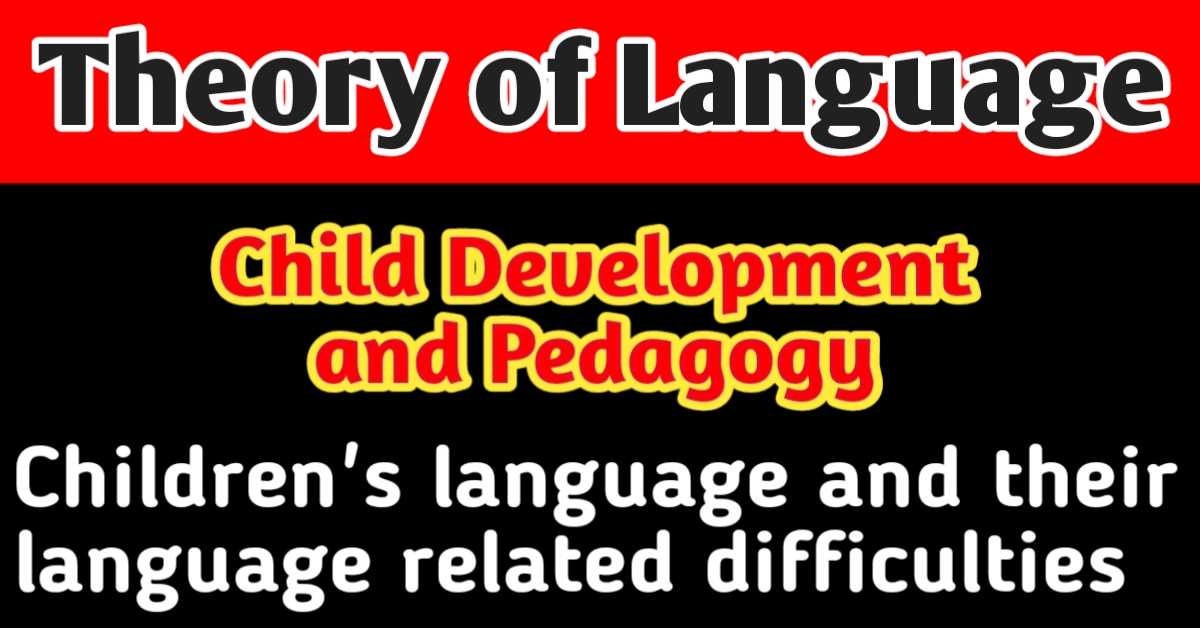
What is grammar? Its Usefulness | Functions of Grammar in the Context of Language in Oral or Written Expression
Grammar is that which helps in writing, reading or verbal expression of a language in standard form. Grammar explains the differences between words, sentences etc. of a language and arranges them in the proper order and provides knowledge of the rules for speaking and writing. No language can be complete without grammar. Only when the grammar is rich, the language gets recognition at the regional or national level. Grammar is a powerful medium to strengthen the oral or written expression of human community. To know and understand a language, it is very important to have grammar knowledge.
Language is made up of sentences, sentences are made up of words and root words are made up of sounds. In grammar, its parts and components are studied and discussed. Therefore, for vocal or written expression of language, whether it is Hindi, Sanskrit or English, it depends on grammar only. Grammar rules are often set targeting written language because words are used with more care in writing than in speaking.
The Hindi word 'Vyakaran' is made up of Vi + Aa + Karan, which literally means "to understand well". Therefore, the rules of grammar are related to the forms and uses of words accepted by the elite.
(1) Grammar determines the rules and principles of language. When a child enters school for the first time, he knows only his mother tongue, which may also be a dialect which he could speak speaks but not in its correct form. Initially, the teacher makes the child know the standard language through imitation and various activities like story, narrative, debate, conversation etc. Later on, the child is given opportunities for expression to express each sentence of the language clearly by keeping in mind the rules of grammar. When the child starts learning to speak, the teacher starts teaching words through sentences and letters through words. Grammatical knowledge begins by starting to learn letters. Teachers teach children about vowels and consonants, and also capital and small letters are taught. We know that there is grammar even in the order of letters. In hindi language knowledge of consonants from 'क' class to 'प' class, combined consonants etc. is imparted keeping the grammar in mind. In the next sequence, the child is gradually taught the structure of words and sentences. Grammatical rules are taken care of in all this. In this way, gradually the child starts learning to speak in a pure and clear manner and gradually the child starts developing linguistic mobility and effectiveness in speaking. If there is no grammar, there will be difficulty in speaking the language correctly and understanding the expressions. Due to lack of grammar, when words are not in proper order, others would have great difficulty in understanding the expressions. The work of grammar is to bring standardization in any language and to set rules for clear expression. If a person utters a sentence without rules like this - "would food like I to have." So the correct meaning cannot be understood from this sentence because there is no sequence of words in this sentence. Therefore, to bring uniformity in an entire province or nation, rules and linguistic restrictions were fixed which is called grammar. From the very beginning of language learning, grammar helps in bringing originality in the child's language, which brings excellence and effectiveness in the child's written and oral expression. In the absence of grammatical rules, speaking or writing any language by a child or a teacher will not be meaningful nor will the full meaning be understood. (1) Alphabet consideration - Under this, the letters related to their shape, pronunciation, classification and the rules for making words from their combination etc. are mentioned. (2) Word Analysis- Word analysis contains details related to the word, its types, origin, etymology and composition etc. (3) Sentence idea - Under the sentence there is information related to the sentence, its types, meaning, analysis, synthesis, composition, components of the sentence and rules for making sentences from words etc. (4) Expressions analysis- Under this, the expressions of a word or phrase have predominance in the language, this makes the language figuratively effective. Conclusion- Grammar is the basis of written or oral expression of any language. The originality and supremacy of any language depends on the rules of grammar. Grammar plays an important role in conveying feelings to others by using language in speaking or conversation. Or we can say that the liveliness, interestingness and excellence of expression of feelings through any language depends only on grammar. Click below link to read about pedagogy of Language इन 👇 प्रकरणों के बारे में भी जानें। इन 👇 प्रकरणों के बारे में भी जानें। इन 👇 प्रकरणों के बारे में भी जानें। इन 👇 प्रकरणों के बारे में भी जानें। इन 👇 प्रकरणों के बारे में भी जानें। हिन्दी भाषा एवं इसका शिक्षा शास्त्र के इन प्रकरणों 👇 के बारे में भी जानें। पर्यावरण का शिक्षाशास्त्र के इन 👇 प्रकरणों के बारे में भी जानें। इन 👇 प्रकरणों के बारे में भी जानें। शिक्षक चयन परीक्षाओं के प्रश्न पत्रों को यहाँ👇 से डाउनलोड करें।Functions of grammar in the context of language in oral or written expression
(2) The creation of language teaches the derivation of words and its correct use for expressing thoughts.
(3) It provides help in learning a foreign language.
(4) To create effectiveness in expression.
(5) To provide standards in expression and writing.
(6) Clarity in language provides mobility.
(7) It is helpful in determining the sequence in words and sentences.
(8) It is helpful in clarifying the difference between words, sentences etc.
(7) It provides information about proper ascent, descent and pause for thrust and elongation.
(10) It is helpful in improving and bringing excellence in writing skills.
(11) It is helpful in understanding the correct meaning in vocal expression.
(12) It helps in determining the recognition of words made from random sound signals.
(13) It helps in improving the language.
(14) It helps in formation of new words.
(15) It is helpful in bringing ornamentation in speech.
(16) It is helpful in understanding the correct meaning.
(17) It is helpful in getting correct spelling.
(18) It is helpful in using idiomatic language.
(19) It is helpful in creating Literature.
(20) It helps in making legible and beautiful writing.Role of grammar in language learning
Elements of grammar which help in written and oral expression of language.
1. What are language and mother tongue? Definitions
2. Language learning tendencies - Curiosity, Simulation and Practice, Pedagogy of Language
3. Language skills - Basis of writing and communication Required competencies for language knowledge
4. Principles of Language Teaching - CTET and TET Exams
5. Elements of language Acquisition. Factors affecting language acquisition
6. English pedagogy Role of listening and speaking in language teaching, Functions of language, How do children use language?
1. बाल विकास क्या है इसकी अवधारणा एवं परिभाषाएंँ
2. बाल विकास की विशेषताएंँ
3. विकास के अध्ययन की उपयोगिता- बाल विकास एवं शिक्षाशास्त्र
4. बाल विकास के अध्ययन में ध्यान रखे जाने वाली प्रमुख बातें
5. गर्भावस्था एवं माता की देखभाल
6. शैशवावस्था- स्वरूप, महत्वव विशेषताएँ
1. विकास के स्वरूप
2. वृद्धि और विकास में अंतर
3. बाल विकास या मानव विकास की अवस्थाएँ
4. बाल्यावस्था स्वरूप और विशेषताएँ
5. किशोरावस्था- किशोरावस्था की विशेषताएँ
1. बहुभाषिकता क्या है
2. संप्रेषण क्या है
3. शिक्षा मनोविज्ञान- प्रकृति और उद्देश्य
4. समाजीकरण का अर्थ
5. POCSO act क्या है
1. उद्योतन सामग्री क्या होती है
2. किशोरावस्था का स्वरूप
3. प्रौढ़ावस्था एवं वृद्धावस्था काल
4. अधिगम क्या है? अधिगम की परिभाषाएँ एवं विशेषताएँ
5. विकास का अधिगम से संबंध
6. शारीरिक विकास क्या है? विकास की परिभाषा
7. शारीरिक विकास एवं इसे प्रभावित करने वाले कारक
8. गामक विकास - परिभाषाएँ, विशेषताएँ एवं प्रभावित करने वाले कारक
9. मानसिक विकास एवं इसे प्रभावित करने वाले कारक
10. संवेग कौन कौन से है? संवेगात्मक विकास को प्रभावित करने वाले कारक।
1. भाषा विकास अर्थ, परिभाषा, चरण एवं प्रभावित करने वाले कारक
2. सामाजिक विकास के अभिकरण एवं इसे प्रभावित करने वाले कारक
3. मूल्य परक विकास (नैतिक विकास) क्या है? प्रभावित करने वाले कारक
4. सृजनात्मक विकास क्या है इसका महत्व एवं प्रभावित करने वाले कारक
5. सौंदर्य विकास क्या है? इसके सिद्धांत, सौंदर्य विकास के तत्व एवं प्रभावित करने वाले कारक
1. भाषा सीखना और ग्रहणशीलता - भाषा और मातृभाषा क्या हैं? परिभाषाएँ
2. भाषा शिक्षा शास्त्र, बालकों को भाषा सिखाने हेतु महत्वपूर्ण तथ्य
3. भाषा की दक्षताएँ, लेखन एवं भाव संप्रेषण के आधार, भाषा सीखना एवं सुधार
4. भाषा ग्रहणशीलता एवं भाषा ग्रहणशीलता के तत्व- भाषा ग्रहणशीलता को प्रभावित करने वाले कारक
5. भाषा शिक्षण के सिद्धांत
6. भाषा शिक्षण में बोलने व सुनने की भूमिका, श्रवण कौशल
7. व्याकरण या grammar क्या है? इसकी उपयोगिता, भाषा की मौखिक या लिखित अभिव्यक्ति के संदर्भ में व्याकरण के कार्य
1. पर्यावरण की अवधारणा
2. पर्यावरण शिक्षा के उद्देश्य
3. पर्यावरण शिक्षा का महत्व
4. पर्यावरण शिक्षा के उद्देश्य
5. समेकित पर्यावरणीय शिक्षा क्या है, इसकी आवश्यकता एवं महत्व
6. पर्यावरण शिक्षा के सूत्र एवं दायित्व
7.पर्यावरण शिक्षा का विज्ञान एवं सामाजिक विज्ञान से सहसंबंध
1. गणित शिक्षण से चिंतन एवं तर्कशक्ति का विकास करना
2. गणित अध्यापन के प्रमुख उद्देश्य, चिंतन शक्ति का विकास
3. गणित शिक्षण से चिंतन एवं तर्क शक्ति का विकास
4. पाठ्यक्रम में गणित का स्थान- (गणित एवं इसका शिक्षा शास्त्र)
5. गणित की मानसिक, व्यवहारिक, साँस्कृतिक एवं व्यावसायिक उपयोगिता, गणित का सौन्दर्य तथा सत्य, गणित अध्यापन के उद्देश्य
1. संविदा शाला वर्ग 3 का 2005 प्रश्न पत्र डाउनलोड करें
2. संविदा शाला वर्ग 2 का 2005 का प्रश्न पत्र डाउनलोड करें
आशा है, उपरोक्त जानकारी उपयोगी एवं महत्वपूर्ण होगी।
(I hope the above information will be useful and important. )
Thank you.
R. F. Tembhre
(Teacher)
infosrf.com




Comments